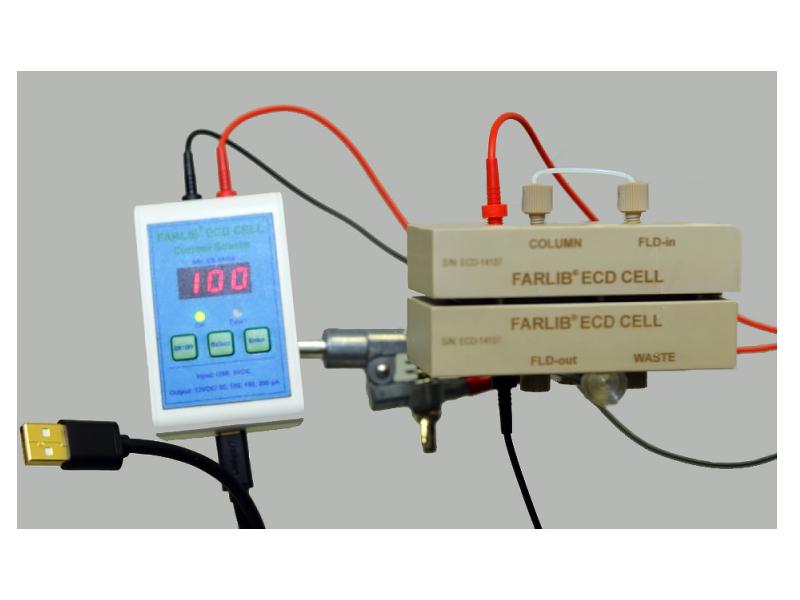FARLIB® LIBIOS Cell
Reference : KB-CELL
Electrochemical cell for bromine post-column derivatisation of aflatoxins B, G prior to HPLC-Fluorescence detector.
Countries eligible for delivery
All countries
LIBIOS is an expert in aflatoxin analysis and has developped its own derivatisation FARLIB® LIBIOS Cell.
The FARLIB® LIBIOS Cell is an electrochemical cell which generates the derivatising agent, bromine, from potassium bromide present in the mobile phase.
The derivatisation of aflatoxins occurs rapidly (reaction time is approximately 4 seconds) at ambient temperature.
Kit composition: cell + current source + membrane (spare)
THE LIBIOS + :
LIBIOS assures a complete maintenance / repair service of your cell and for all derivatisation cells!
LIBIOS proposes all accessories of derivatisation cells too: accessories, membranes of replacement, connexion kits,...
The FARLIB® LIBIOS Cell is an electrochemical cell which generates the derivatising agent, bromine, from potassium bromide present in the mobile phase.
The derivatisation of aflatoxins occurs rapidly (reaction time is approximately 4 seconds) at ambient temperature.
Kit composition: cell + current source + membrane (spare)
THE LIBIOS + :
LIBIOS assures a complete maintenance / repair service of your cell and for all derivatisation cells!
LIBIOS proposes all accessories of derivatisation cells too: accessories, membranes of replacement, connexion kits,...
- High increase of aflatoxins fluorescence activity and very repeatable results
- Fast technique (4 seconds), more specific than resorting alternative methods notably TFA (Trifluoroacetic acid) or iodine.
- Derivatising agent included in the mobile phase: no daily preparation necessary.
- Mobile phase is not modified despite of addition of KBr and nitric acid
- No equipment or additionnal pump
- Easy installation / desinstallation
- Low maintenance costs
- Cell in peek:excellent resistance in comparison with teflon used by other manufacturers
- Low voltage power supply box (5V) with USB and 1 orange light led for error
- Engraved cell to avoid error manipulation
- Improved separation grid to avoid the increase of pressure effect and prevent breakage of the flow cell detector
- LIBIOS replaces spare parts and membrane of replacement: KB-CONKIT (connexion kit), KB-MEMB (membrane of replacement)
For aflatoxin analysis by HPLC
CATALOG_KB_CELL_EN_2022.pdf
KB-CELL LIBIOS instructions
The attached documents are subject to change. To receive the latest updates, please contact us.
Specifications
| Reference | Packaging | |
|---|---|---|
| KB-CELL | 1 cellule complète (1 complete cell) |

